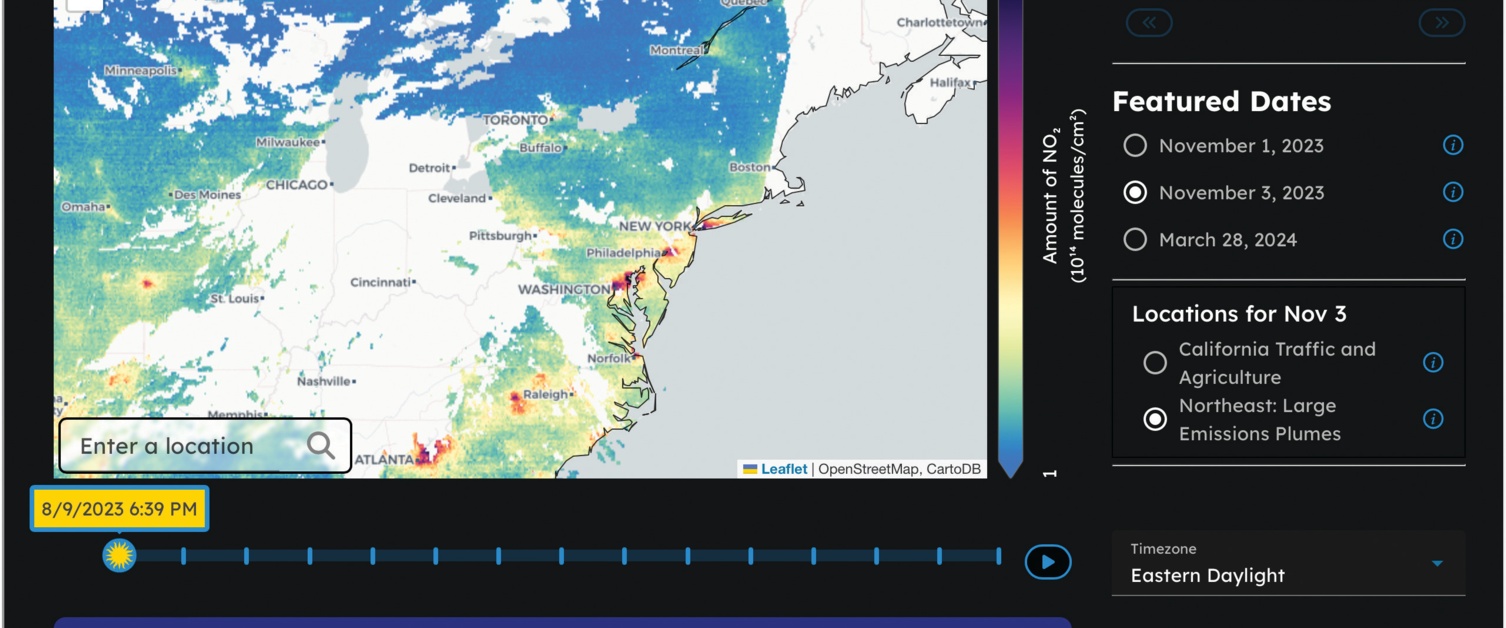With TEMPO, Pollution Can't Hide
- By AMS Staff
- Oct 11, 2024
Air pollution information for North America is now available at unprecedented detail with the recent release of data from the Tropospheric Emissions: Monitoring of Pollution (TEMPO) mission. Previous satellite instruments measuring pollution from low-Earth orbit only took measurements at a given location on the ground once per day, and always at the same time. But as TEMPO team member Caroline Nowlan of the Smithsonian Astrophysical Observatory notes, “air quality can change a lot over a day. For instance, cities usually have two rush hour peaks in pollution, and changing winds mean a plume from a power plant could be changing direction hour-to-hour.” Launched in 2023, TEMPO provides hourly daytime satellite-based measurements of air pollution across the United States, northern Mexico, and southern Canada down to neighborhood scale. “TEMPO is so ground-breaking because it is in an orbit that allows us to continuously scan North America, and, for the first time, allows us to monitor pollution over all daylight hours,” Nowlan says. This could enhance many aspects of pollution research, including rush-hour pollution, lightning effects on ozone, links of health issues to acute pollution exposure, the movement of pollution from fires and volcanoes, and air pollution’s impact on underserved populations. TEMPO’s main instrument is an advanced spectrometer that detects pollution by monitoring the absorption and scattering of sunlight by gases and particles in the troposphere. Pollutants measured by the instrument include nitrogen dioxide, formaldehyde, and ground-level ozone. “TEMPO is one of NASA’s Earth-observing instruments making giant leaps to improve life on our home planet,” say NASA Administrator Bill Nelson. “The air we breathe affects everyone, and [TEMPO] is revolutionizing the way we track air quality for the benefit of humanity.” A new TEMPO data visualization tool is available at https://tempo.si.edu
/data_for_public.html. [SOURCES: Harvard-Smithsonian Center for Astrophysics, NASA]
